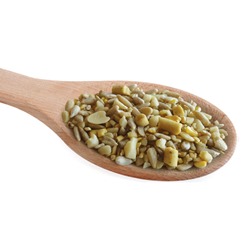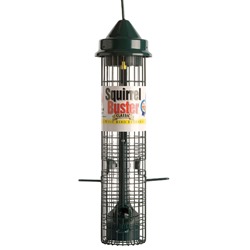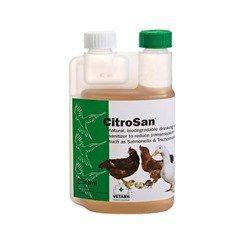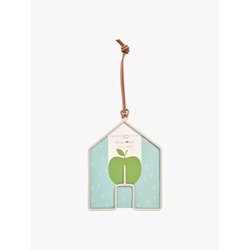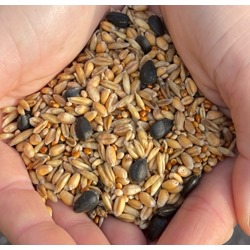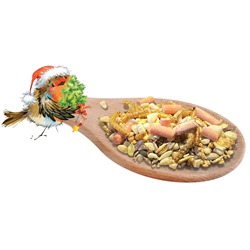Do you want to learn more about goldfinches? How to attract them to your garden and what to do once you have them? Well, dive into our goldfinch bird profile to learn everything you need to know about these beautiful little birds!
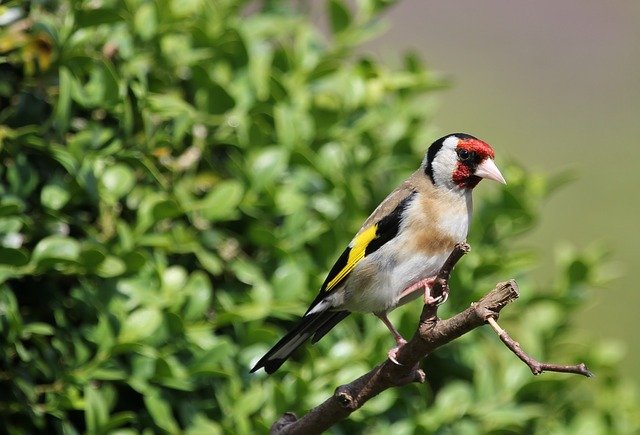
The goldfinch, also known as Carduelis carduelis, is one of the most attractive birds you're likely to find in Britain thanks to its bright colours and unique patterns.
Historically, these small birds were kept as caged birds with hundreds of thousands of them being captured from the wild. That was until 1933 when the UK government passed an act to make the sale of wild birds illegal. Since then, goldfinches have survived from the point of extinction to become one of Britain's most-loved birds!
Identifying goldfinches
Due to their striking and unusual appearance, goldfinches aren't that difficult to identify. Males inherit a black, white and redhead pattern, while female goldfinches have a dull yellow/olive green head.
Whilst goldfinches are in flight, the yellow wing bar becomes a much more striking feature that contrasts the black plumage around it. Younger goldfinches, often seen during the early parts of the summer, are distinctively less colourful. Similarly, in winter, goldfinches are much duller in colour.
What do goldfinches eat?
Goldfinches' main source of food comes from seeds. During the early summer, they feed on the seeds of small plants such as groundsel and dandelion and during the later parts of the summer they switch to teasels and thistles as their main sources. Thanks to their slim, long beaks, goldfinches have evolved into thistle-eating specialists!
Thanks to their short, stout legs, they are able to hold on tightly when feeding but are often required to use their outstretched wings to balance and counteract the strong winds.
Nesting habits
Unlike most other common garden birds, goldfinches leave their nesting until later in the season. Their first brood hatches around June with the following broods hatching as late as September. Goldfinches cleverly choose to do this so that their young are born when there is plenty of food supply available, giving them a better chance of survival.
Goldfinch nests consist of mud and grass and are lined with wool to produce a deep-cupped, well-insulated nest that keeps their young safe and well-protected from the elements. Often, they will decorate the outsides of their nests with lichen that is carefully picked from nearby trees to help keep them camouflaged from passing predators.
What do goldfinch eggs look like?
Goldfinch eggs are white and finely spotted. They usually take around a fortnight to hatch and during this time the male travels around to gather food for the female, which allows her to incubate the eggs continuously. Young goldfinches feed mainly on seeds from a variety of plants, depending on the season.
DID YOU KNOW? - Flocks of goldfinches are called charms. How charming!
Attracting goldfinches
A great way to attract goldfinches to your garden is through planting, specifically, planting their favourite food such as thistle and teasel.
Once you have planted these and you begin to attract the wild birds, you can keep them coming throughout the year by offering certain seeds in special feeders.
Natural food is always the best option when it comes to feeding goldfinches, however, during the winter and early spring, natural food resources become stretched. Therefore, by providing this food yourself, you are encouraging flocks of goldfinches to stay rather than pairing up and nesting.
Goldfinches are particularly partial to niger seed and sunflower hearts, both of which we supply here at Really Wild Bird Food.
Niger Seeds > Sunflower Hearts >
In regards to water, goldfinches do need to drink more than most other types of birds as they are predominantly seed-eaters. During the warm summer months, natural water supplies can be difficult to find so other sources such as ponds and baths become much more important.
How do goldfinches travel?
Goldfinches regularly travel long distances in flocks to find suitable food supplies. Despite flying in flocks, however, they often break out in squabbles with other goldfinches, especially if they feel like another bird is getting a little too close to their feeding area.
They are also partial migrants. Some goldfinches fly to countries located south of the UK, including Belgium, France and sometimes Spain. Others, however, tend to stay in the UK and nest for the winter.
Goldfinches are one of the most beautiful wild birds found here in the UK. If you have a hobby of looking for these stunning birds, we'd love to see them! Feel free to share photos with us on our social media accounts. If you have any questions, you can email us here - sales@reallywildbirdfood.co.uk.
 Bird Feeders
Bird Feeders  Seed Feeders
Seed Feeders Peanut Feeders
Peanut Feeders Peanut Butter Feeders
Peanut Butter Feeders Suet & Fat Feeders
Suet & Fat Feeders Window Feeders
Window Feeders Hanging Feeders
Hanging Feeders Feeding Stations
Feeding Stations Ground Feeders
Ground Feeders Easy Clean Feeders
Easy Clean Feeders Bird Tables
Bird Tables Seed Trays
Seed Trays Bird Baths & Drinkers
Bird Baths & Drinkers Feeder Accessories
Feeder Accessories Feeder Hygiene
Feeder Hygiene Squirrel Proof Bird Feeders
Squirrel Proof Bird Feeders For the Kids
For the Kids Niger Seed Feeders
Niger Seed Feeders Mealworm Feeders
Mealworm Feeders Bird Food Storage
Bird Food Storage Fat Ball Feeders
Fat Ball Feeders Tube Feeders
Tube Feeders













